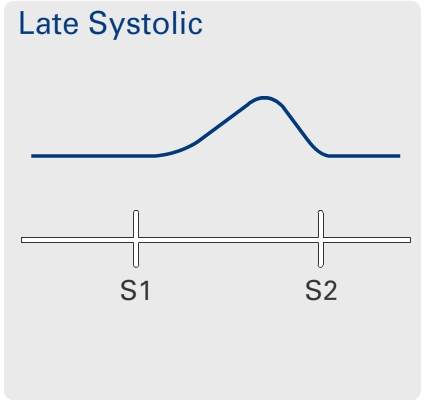
The timing of a late systolic lower left sternal edge impulse is quite different than the usual systolic precordial impulses that begin in early systole. If one simultaneously palpates the apical and left parasternal areas, the early apical
impulse followed by the late parasternal impulse imparts a rocking motion to the chest wall. In the video that follows, note that the lower left sternal edge impulse is late systolic and occurs well after the apical impulse.